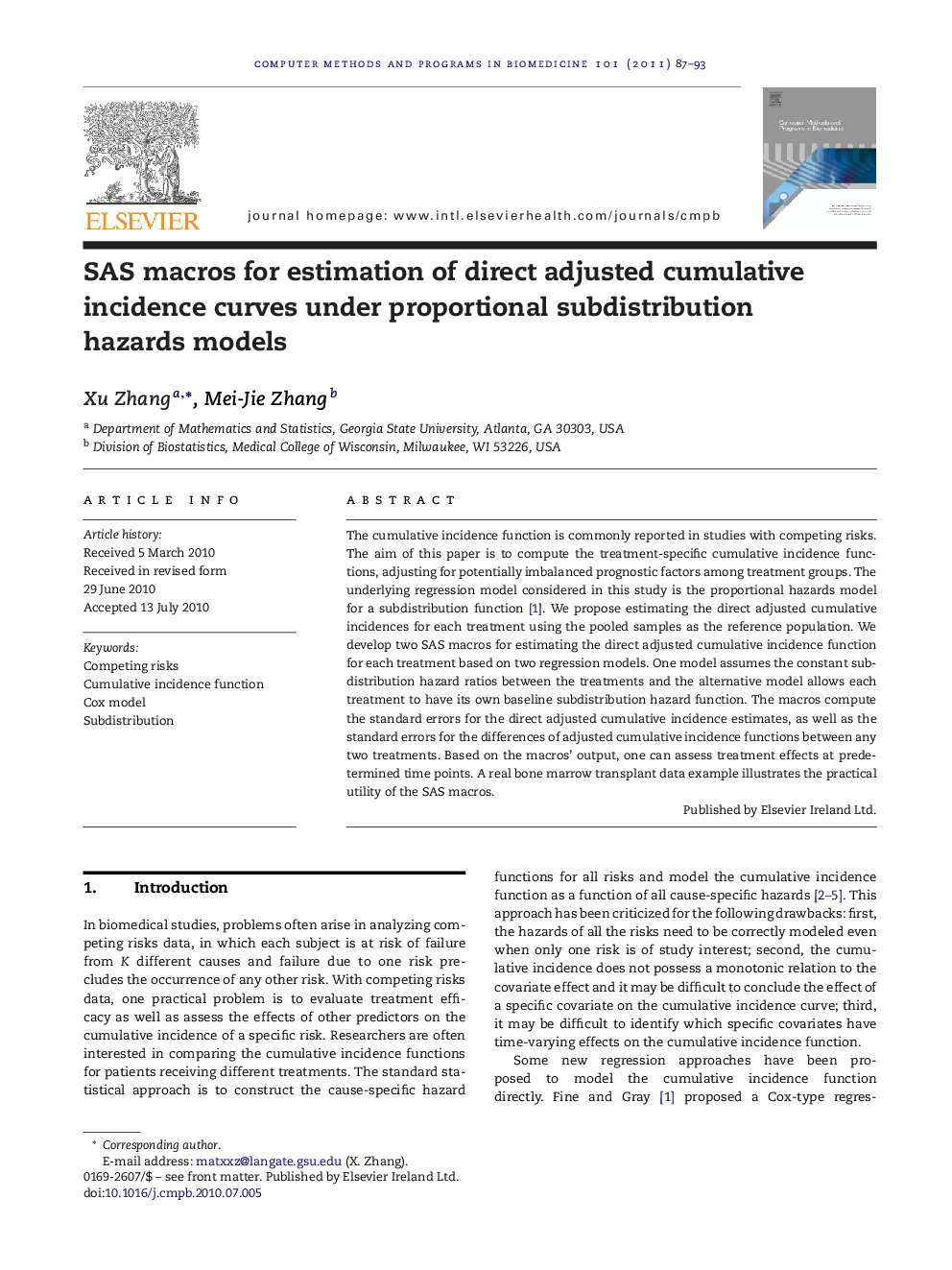| Article ID | Journal | Published Year | Pages | File Type |
|---|---|---|---|---|
| 470054 | Computer Methods and Programs in Biomedicine | 2011 | 7 Pages |
The cumulative incidence function is commonly reported in studies with competing risks. The aim of this paper is to compute the treatment-specific cumulative incidence functions, adjusting for potentially imbalanced prognostic factors among treatment groups. The underlying regression model considered in this study is the proportional hazards model for a subdistribution function [1]. We propose estimating the direct adjusted cumulative incidences for each treatment using the pooled samples as the reference population. We develop two SAS macros for estimating the direct adjusted cumulative incidence function for each treatment based on two regression models. One model assumes the constant subdistribution hazard ratios between the treatments and the alternative model allows each treatment to have its own baseline subdistribution hazard function. The macros compute the standard errors for the direct adjusted cumulative incidence estimates, as well as the standard errors for the differences of adjusted cumulative incidence functions between any two treatments. Based on the macros’ output, one can assess treatment effects at predetermined time points. A real bone marrow transplant data example illustrates the practical utility of the SAS macros.
